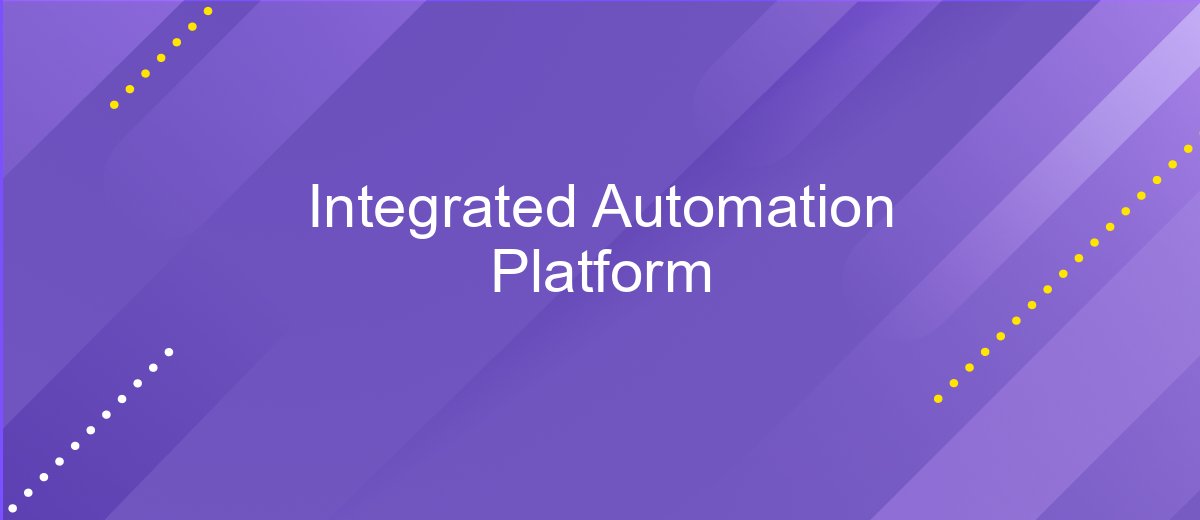Integrated Automation Platform
In today's rapidly evolving technological landscape, an Integrated Automation Platform stands as a cornerstone for businesses seeking efficiency and innovation. By seamlessly combining various automation tools and processes, it enables organizations to streamline operations, reduce manual effort, and enhance productivity. This article explores the key features, benefits, and implementation strategies of an Integrated Automation Platform, highlighting its transformative impact on modern enterprises.
Overview
Integrated Automation Platform (IAP) is a comprehensive solution designed to streamline and enhance business processes by integrating various automation tools and technologies into a unified framework. By leveraging IAP, organizations can achieve higher efficiency, reduce operational costs, and improve overall productivity.
- Centralized control and monitoring of automation processes
- Seamless integration with existing systems and applications
- Scalability to accommodate growing business needs
- Enhanced data analytics and reporting capabilities
- Improved collaboration and communication among teams
With IAP, businesses can automate repetitive tasks, manage workflows more effectively, and gain real-time insights into their operations. This not only frees up valuable human resources for more strategic activities but also ensures that processes are executed consistently and accurately. Ultimately, an Integrated Automation Platform empowers organizations to stay competitive in a rapidly evolving technological landscape.
Benefits

Integrated Automation Platforms offer numerous benefits that can significantly enhance business operations. One of the primary advantages is the ability to streamline workflows by automating repetitive tasks, thereby reducing human error and increasing efficiency. This leads to cost savings and allows employees to focus on more strategic activities. Additionally, these platforms often come with analytics and reporting tools that provide valuable insights into business processes, enabling data-driven decision-making.
Another key benefit is the ease of integration with various third-party applications and services. For instance, tools like ApiX-Drive facilitate seamless integration between different software systems, making it easier to synchronize data and automate complex workflows. This not only improves data accuracy but also enhances collaboration across different departments. Moreover, integrated automation platforms are scalable, allowing businesses to adapt quickly to changing needs and demands, thus ensuring long-term sustainability and growth.
Components

Integrated Automation Platforms (IAPs) are designed to streamline and optimize various processes within an organization. These platforms consist of several key components that work together to provide a cohesive and efficient automation solution. Understanding these components is crucial for leveraging the full potential of an IAP.
- Orchestration Engine: This core component coordinates and manages the execution of automated tasks and workflows across different systems.
- Integration Layer: Facilitates seamless communication between disparate systems, applications, and data sources, ensuring smooth data flow.
- Analytics and Reporting: Provides insights and performance metrics to monitor and optimize automated processes.
- User Interface: Offers an intuitive interface for users to design, deploy, and manage automation workflows.
- Security and Compliance: Ensures that all automated processes adhere to organizational security policies and regulatory requirements.
By leveraging these components, organizations can achieve greater efficiency, reduce operational costs, and enhance overall productivity. Each component plays a vital role in ensuring that the automation platform delivers a robust and scalable solution to meet the evolving needs of the business.
Examples of Use

Integrated Automation Platforms (IAP) are revolutionizing various industries by streamlining operations and enhancing productivity. These platforms combine multiple automation tools into a single cohesive system, making it easier for businesses to manage complex workflows and reduce manual intervention.
One prominent example of IAP usage is in the manufacturing sector. Here, IAPs facilitate the integration of robotics, machine learning, and IoT devices to create smart factories. This integration allows for real-time monitoring and optimization of production processes, leading to increased efficiency and reduced downtime.
- In healthcare, IAPs automate patient data management, improving accuracy and speed of diagnosis.
- In finance, these platforms streamline transaction processing and compliance checks.
- In retail, IAPs enhance supply chain management and customer experience through predictive analytics.
- In logistics, they optimize route planning and inventory management.
Overall, Integrated Automation Platforms are versatile tools that can be tailored to meet the specific needs of different industries. By automating repetitive tasks and providing real-time insights, IAPs help organizations achieve higher levels of efficiency and innovation.
Conclusion
The implementation of an Integrated Automation Platform significantly enhances operational efficiency by streamlining workflows and reducing manual intervention. By centralizing various automation processes, businesses can achieve higher levels of productivity and accuracy. This unified approach not only minimizes errors but also allows for more comprehensive data analysis, leading to better-informed decision-making and strategic planning.
Furthermore, leveraging tools like ApiX-Drive for integration setup simplifies the process of connecting disparate systems. ApiX-Drive provides a user-friendly interface and robust functionality, enabling seamless integration without the need for extensive technical expertise. This ease of use ensures that businesses can quickly adapt to changing requirements and scale their operations effectively. In conclusion, adopting an Integrated Automation Platform, complemented by efficient integration services, is a strategic move towards achieving sustainable growth and operational excellence.
FAQ
What is an Integrated Automation Platform?
How can an Integrated Automation Platform benefit my business?
Is it difficult to set up an Integrated Automation Platform?
Can I integrate different types of software applications?
What kind of support is available for setting up integrations?
Apix-Drive is a universal tool that will quickly streamline any workflow, freeing you from routine and possible financial losses. Try ApiX-Drive in action and see how useful it is for you personally. In the meantime, when you are setting up connections between systems, think about where you are investing your free time, because now you will have much more of it.

